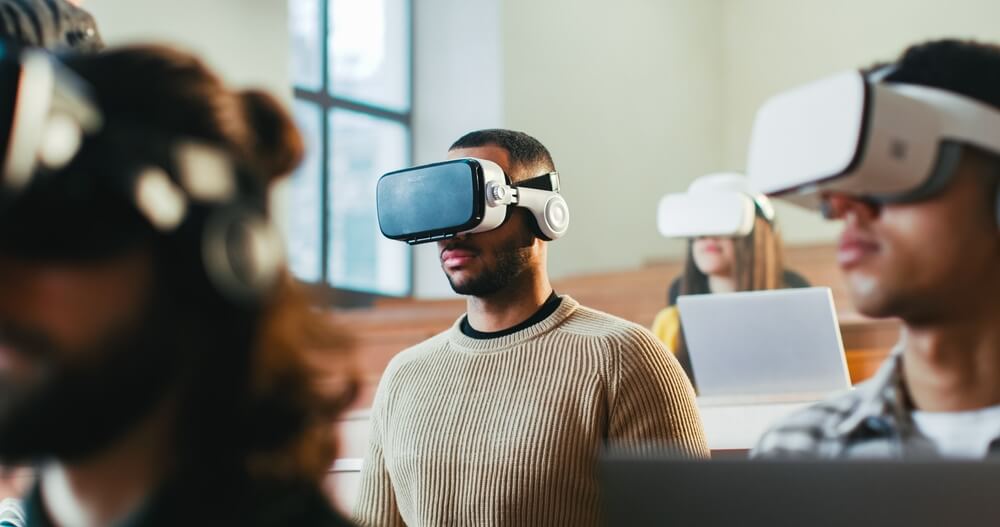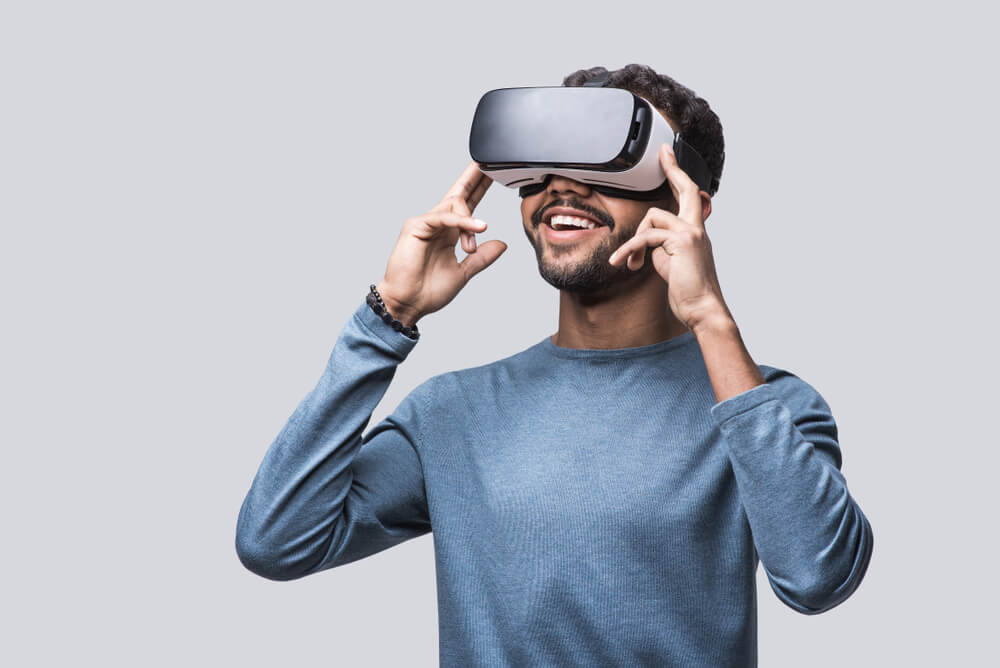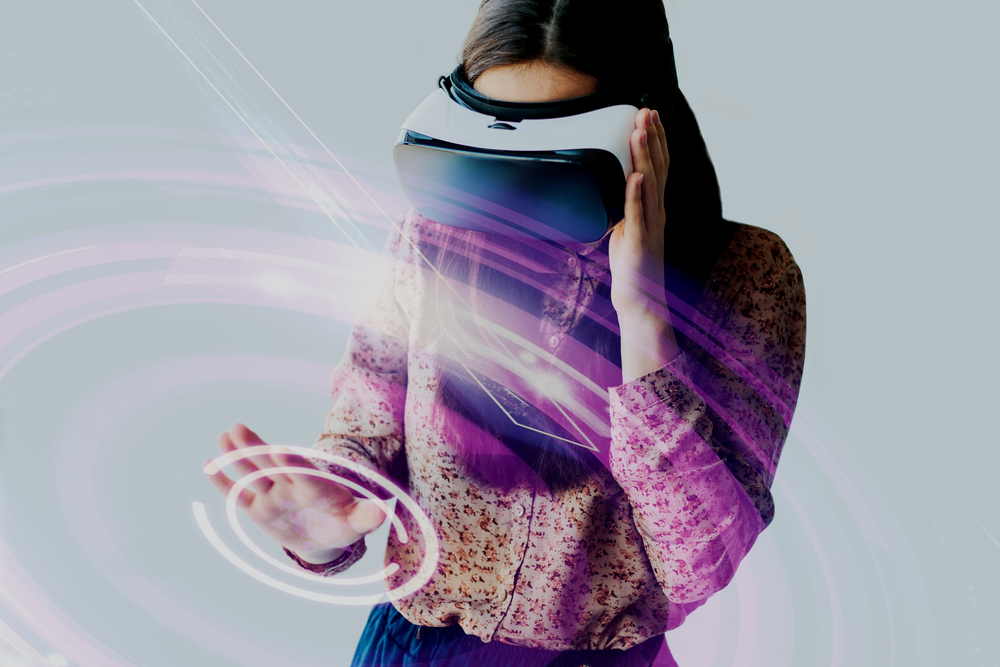Virtual Reality (VR) and other technologies are some of the primary cutting-edge methods being embraced by learning institutions. In Australia, most – if not all – of the Group of 8 (Go8) are already using tech in one form or another. Notable examples include the University of Western Australia and the University of Sydney, both of whom have invested heavily in advanced learning methods.
The use of technology and VR for education and training is set to increase exponentially – and with good reason. They actively:
- Create a wholly immersive and inclusive learning environment.
- Promote learning through experience.
- Encourage student interactions.
It’s not just educational facilities that can take advantage. The corporate learning and training environment can also benefit.
The Benefits of Technology and VR in the Educational Setting
Humans learn in a variety of ways. Theoretical learning – the act of reading, writing and research – has long been the mainstay of university education. However, the process is dramatically enhanced through active practice and the stimulation of multiple senses.
The process of learning creates neural pathways – interconnections within the brain via which stored memories can be retrieved and used. The more of these that are created, the easier knowledge retrieval is.
VR directly increases these pathways through practical immersive experiences.
What is VR and what is VR learning?
VR utilises equipment and a computer programme to create an artificial 3-dimensional environment. Users might wear goggles, a headset and even a bodysuit, all of which contain sensors that allow real-time movement and action in the computer-generated landscape.
When applied to learning, it creates a realistic virtual plane in which a student can experience pretty much any desired scenario. Examples include:
- A medical student carrying out an examination or procedure.
- Traveling into space as a part of astrophysics learning.
- An engineering student implementing a particular structural design and seeing how it works in a real world environment.
- Improving archaeological study by exploring ancient ruins on the other side of the world.
Another standout feature of VR in education is that it can provide real-time tangible feedback. By combining artificial intelligence (AI) and speech recognition tools, a student can verbally communicate their understanding of the subject and the reasons behind their actions. They can then get instant feedback that evaluates performance, identifies strengths and highlights areas for improvement.
Additionally, VR can be applied to distance learning. The best universities often offer remote courses delivered on a global scale. Virtual worlds and applications allow students to meet and collaborate in what’s termed ‘the metaverse’ – a 3D digital space that‘s even being used to deliver lectures and lessons.
It’s Not All About VR
While VR is one of the most widely used educational technologies, many more are being embraced. Other immersive learning techniques include augmented reality (AR), artificial intelligence (AI), virtual classrooms, gamification, smart classrooms and more.
One of the greatest benefits of educational cutting-edge tech is the ability to deliver a custom learning experience. Every student is individual, learning at a different rate and better suited to one type of study than another. Analysing personal needs, determining areas of strength and weakness, as well as understanding which methods lead to the best results, allows teachers and educators to create the best pathway for each student.
The Role of Technology in Examinations
Technology in the exam space is further streamlining the process. Universities are taking advantage of tools, such as speech recognition tech, examination reader pens and computer readers.
There are some cases where human readers and examiners aren’t permitted. Instead, an intelligent computer reader is used. Certain English Language exams are a prime example.
Tech can also be used to support students who suffer from certain conditions, like dyslexia. Using headphones and technology, they can have questions, symbols, content etc read out loud, thus reducing what can be a significant disadvantage in the exam landscape.
Universities that invest in examination technology can drive down the human cost of marking and support. Such savings can then be directed to more productive elements, such as face-to-face learning and additional classroom teaching.
Cost-Effective Strategies for Using VR for Education and Training
Academic environments, such as universities, colleges, schools and workplace learning and development, are often cost-constrained. Investing in the technology that upscales the educational process is expensive – especially when purchasing equipment outright.
In addition, tech is advancing at a rapid rate. What is cutting-edge today might be obsolete in a few years (or even months!). Many institutions, therefore, look to a viable rental model, as opposed to buying outright.
This allows for the latest hardware and software, such as premium VR and AR headsets, examination equipment solutions and training equipment to be integrated into the complete learning suite.
Hire Intelligence provides an enormous range of short-term educational rental solutions designed to:
- Be affordable, without committing to long-term investment.
- Provide the latest technology, often in volume
- Support logistics and easy procurement for a wide range of educational purposes.
Whether you require technology for a single examination scenario or the latest VR tech to upscale the student learning process. We can help.
Contact us today to speak to one of our expert advisors.






